Building a knowledge base for low-emission rice production
From November 13 to 15, in Long Xuyen ward, An Giang province, the National Agricultural Extension Center in collaboration with the Institute of Agricultural Environment and An Giang Agricultural Extension Center organized a training course on "Guidelines for measuring, reporting and verifying (MRV) greenhouse gas emissions" for 30 trainees who are agricultural managers, technicians, agricultural extension officers, cooperative members and community extension workers in An Giang province. This activity is part of a series of capacity building training for source trainers (ToT) on high-quality, low-emission rice cultivation in the Mekong Delta.
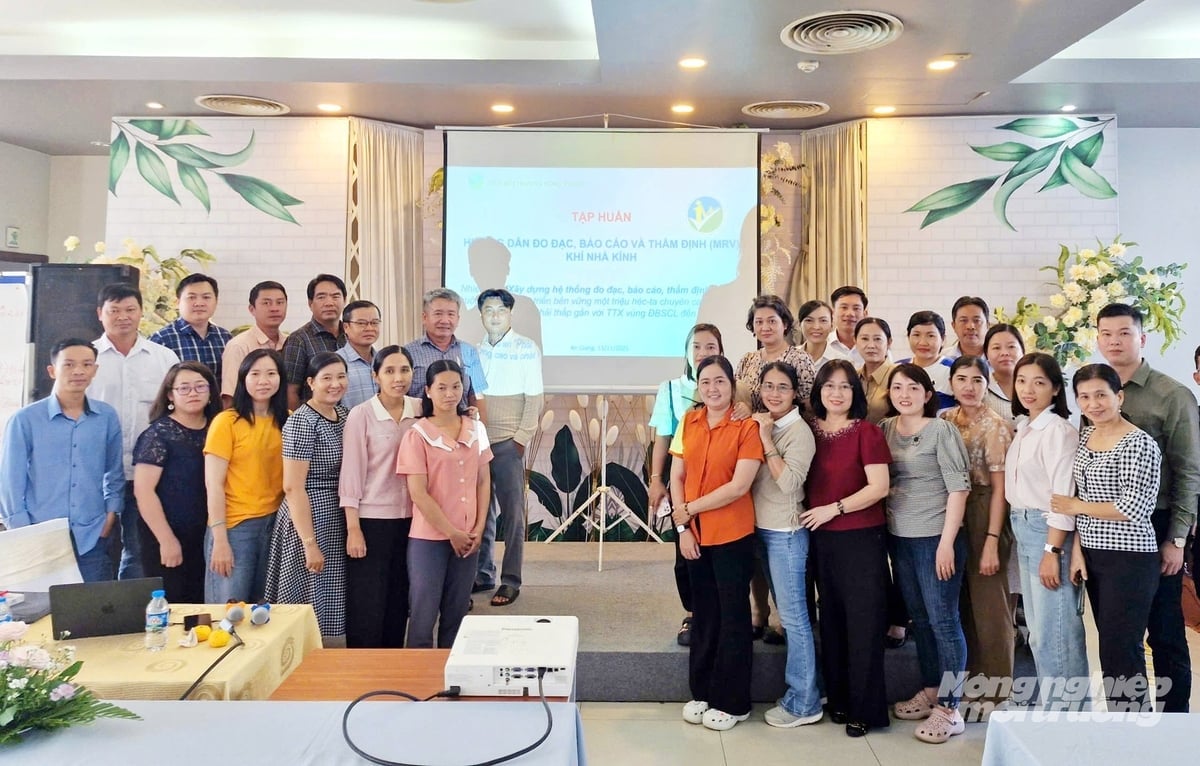
The training course is for 30 trainees who are agricultural managers, technicians, agricultural extension officers, cooperative members and community extension workers. Photo: Le Hoang Vu.
The training course is considered one of the important preparatory steps for An Giang - one of the key localities of the Project on 1 million hectares of high-quality and low-emission rice - to properly, fully and transparently implement technical requirements on reducing greenhouse gas emissions in rice production.
A representative of the Institute of Agricultural Environment said that MRV is not only a measurement tool but also the “backbone” of low-carbon agricultural models. An accurate and transparent MRV system will help Vietnam quantify the results of emission reduction, thereby opening up opportunities to attract carbon financial resources and international support mechanisms.
At the training course, the lecturers emphasized that rice cultivation is one of the largest sources of methane (CH₄) emissions in agriculture. Therefore, the construction of an MRV system is a mandatory requirement for Vietnam to fulfill its commitment to reduce greenhouse gas emissions, while meeting the targets of the 1 million hectares of high-quality rice project.
The highlight of the program was a field trip to two 50-hectare pilot models applying MRV at Hiep Xuan Phu Cooperative (Binh Thanh Dong Commune) and Thanh Nien Phu Hoa Cooperative (Tan Hoi Commune) in An Giang Province. Here, trainees observed how to collect operational data, record production logs, monitor the alternating flood and dry irrigation system, and evaluate the amount of straw and fertilizer used.
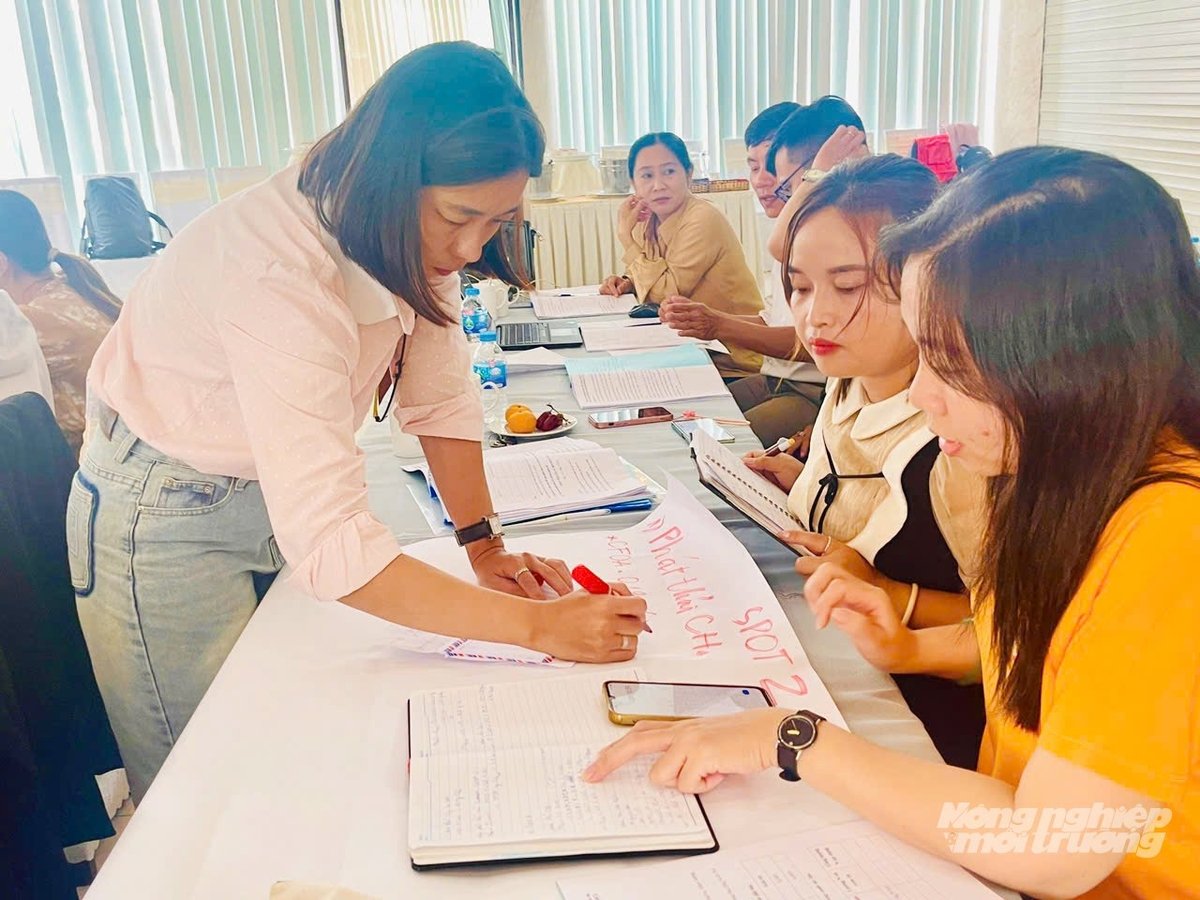
The training course is one of the important preparatory steps for An Giang to implement the 1 million hectare project of high-quality, low-emission rice cultivation. Photo: Le Hoang Vu.
Dr. Bui Thi Phuong Loan, Head of the Department of Modeling and Database - Institute of Agricultural Environment (Vietnam Academy of Agricultural Sciences ) shared: The MRV system helps to accurately quantify the level of emission reduction from each farming method such as "3 reductions 3 increases" and "1 must 5 reductions", alternating flooding and drying, fertilizer management or straw treatment. Without MRV, it would be impossible to demonstrate the effectiveness of emission reduction and difficult to access carbon finance sources.
During the 3-day training, trainees were fully introduced to the concepts of greenhouse gases, field measurement procedures, activity data collection, emission calculation, reporting and independent verification procedures. In particular, group discussions helped trainees grasp how to apply MRV to each actual farming model of the province.

MRV training in An Giang is an important preparation step for staff and cooperatives to grasp the technical requirements before implementing on a large scale. Photo: Le Hoang Vu.
MRV - an urgent requirement in green transformation
An important part of the training course is to introduce emission reduction farming measures being implemented in the Mekong Delta such as "3 reductions 3 increases", reducing costs, reducing emissions. Applying "3 reductions 3 increases" helps reduce seeds, nitrogen fertilizers and pesticides, while increasing productivity and economic efficiency. Measurement results of the Institute of Agricultural Environment show that the rice farming model applying "3 reductions 3 increases" in the Mekong Delta helps reduce 16.7 - 22.5% of greenhouse gas emissions compared to traditional practices.
The “1 must 5 reductions” technique is an advanced development step from “3 reductions 3 increases” including reducing seeds, reducing nitrogen fertilizers, reducing irrigation water, reducing pesticides, reducing post-harvest losses and using high-quality seeds. With this technique, the emission reduction is about 25.3%, equivalent to 2.4 tons of CO₂tđ/ha/year.
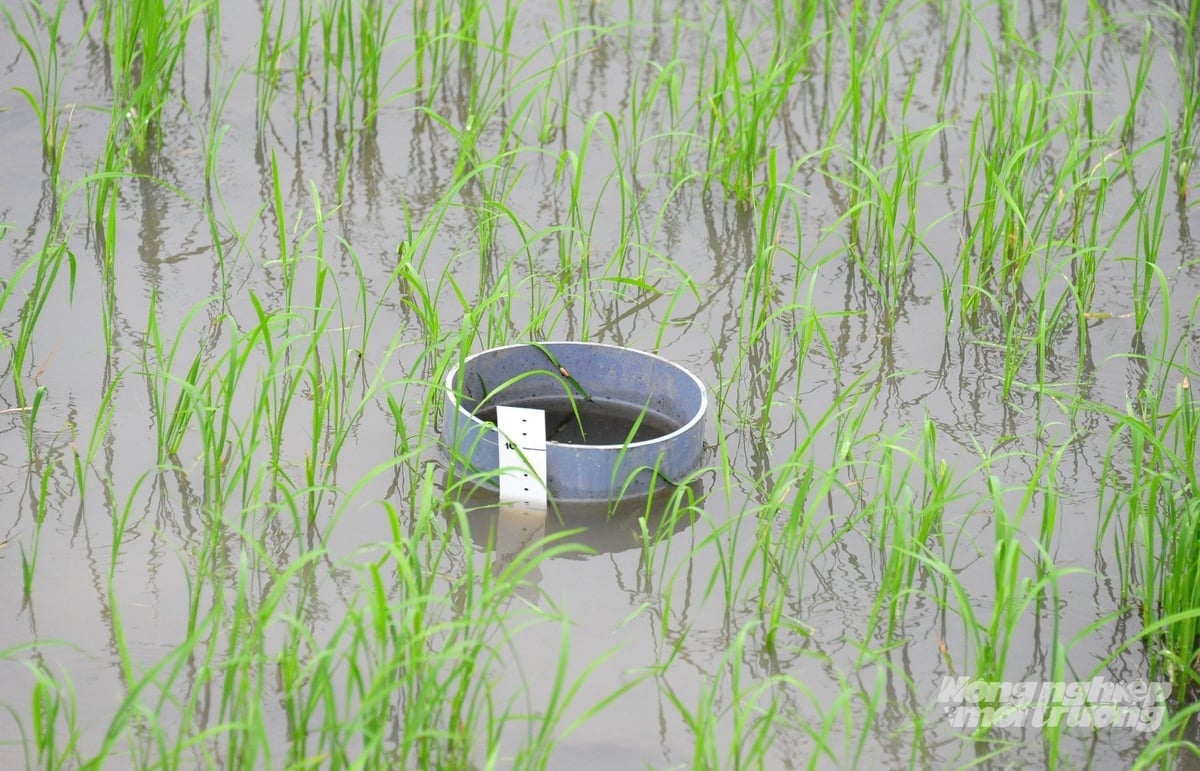
Rice cultivation is one of the largest sources of methane (CH₄) emissions in agriculture. Photo: Le Hoang Vu.
The System of Rice Improvement (SRI) reduces seeds by up to 80%, saves 40-50% of irrigation water and reduces pesticides by 50-100%. Studies show that SRI can reduce greenhouse gas emissions by 32-69% compared to conventional production.
Proper straw management, straw collection, composting or biochar production helps avoid CH₄ emissions and improve soil. With MRV, these measures
Slow-release fertilizers and deep burial technology also reduce N₂O emissions by 20–60% and support CH₄ reduction when combined with appropriate irrigation practices.
All of the above techniques require an MRV system to clearly determine the level of emission reduction, ensuring reliability when reporting within the framework of the 1 million hectare rice project.
According to MSc. Dinh Quang Hieu (Institute of Agricultural Environment), the above models are expected to become the nucleus for replication when localities enter the phase of mass implementation of the 1 million hectare high-quality rice project.
MSc. Hieu emphasized that the organization of MRV training courses in An Giang is considered an important preparation step for staff and cooperatives to grasp the technical requirements before implementing on a large scale. When MRV is applied consistently, the locality will have sufficient data to report, assess and demonstrate the effectiveness of emission reduction according to international standards.
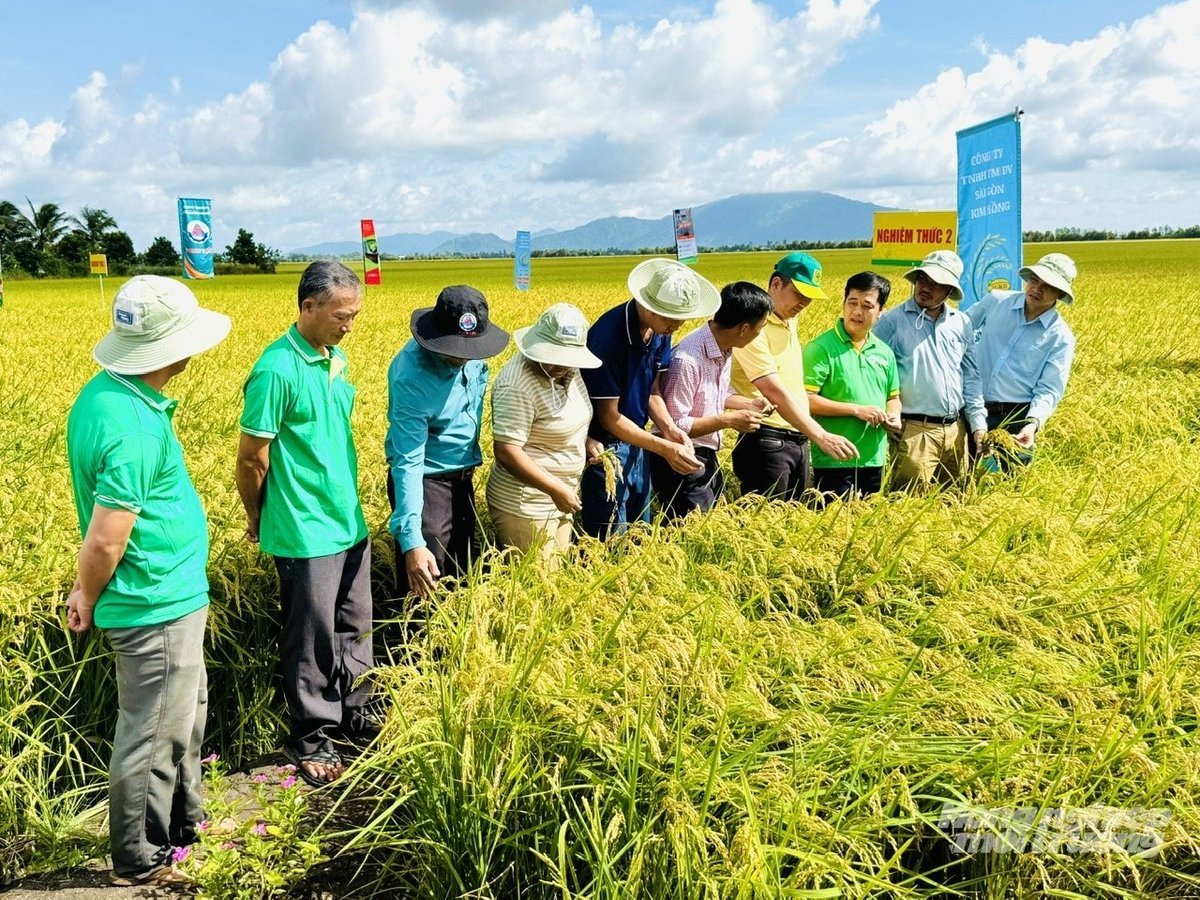
High-quality rice cultivation, emission reduction in An Giang. Photo: Le Hoang Vu.
The representative of the National Agricultural Extension Center affirmed that through the MRV training course in An Giang, a new phase in rice production in the province will be opened, requiring more transparency, more science and standardization towards low emissions. This is an important premise for the locality to contribute to making the Project of 1 million hectares of high-quality and low-emission rice a reality, increasing the value of Vietnamese rice in the context of climate change.
A good MRV system will help An Giang and the entire Mekong Delta not only cultivate rice more efficiently but also qualify to participate in the carbon market in the future.
Source: https://nongnghiepmoitruong.vn/tap-huan-huong-dan-do-dac-bao-cao-va-tham-dinh-phat-thai-khi-nha-kinh-d784310.html




![[Photo] Panorama of the 2025 Community Action Awards Final Round](https://vphoto.vietnam.vn/thumb/1200x675/vietnam/resource/IMAGE/2025/11/15/1763206932975_chi-7868-jpg.webp)

![[Photo] General Secretary To Lam receives Vice President of Luxshare-ICT Group (China)](https://vphoto.vietnam.vn/thumb/1200x675/vietnam/resource/IMAGE/2025/11/15/1763211137119_a1-bnd-7809-8939-jpg.webp)
![[Photo] Prime Minister Pham Minh Chinh meets with representatives of outstanding teachers](https://vphoto.vietnam.vn/thumb/1200x675/vietnam/resource/IMAGE/2025/11/15/1763215934276_dsc-0578-jpg.webp)











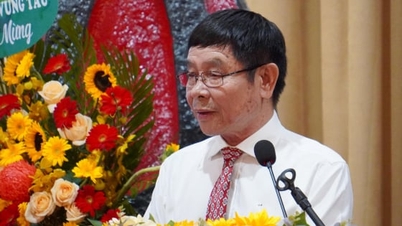

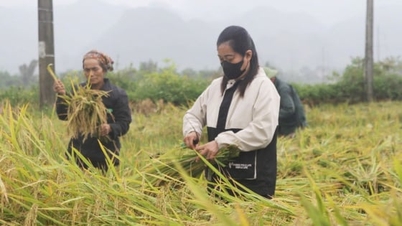
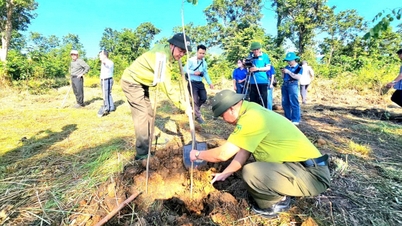


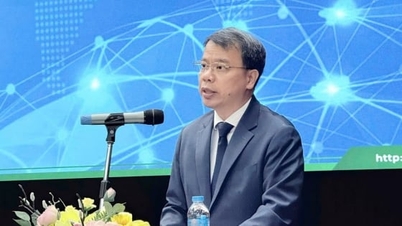




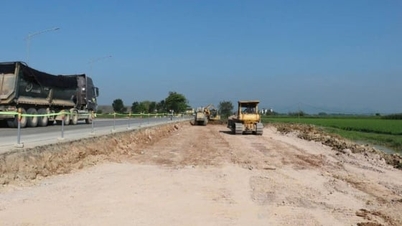
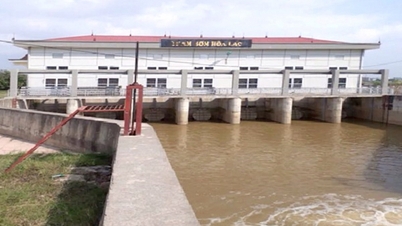
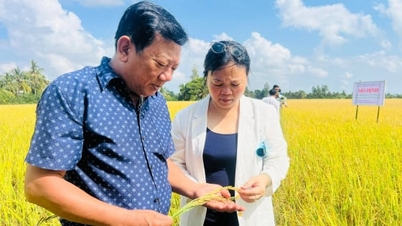


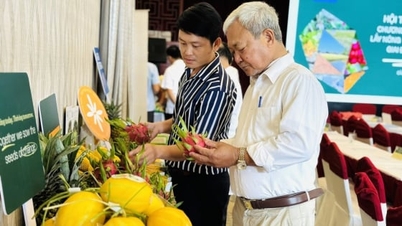


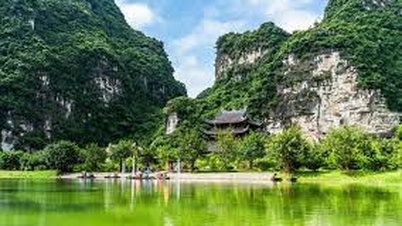


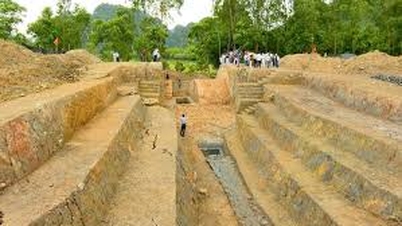





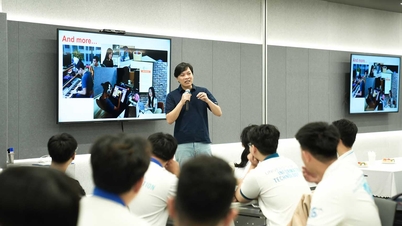




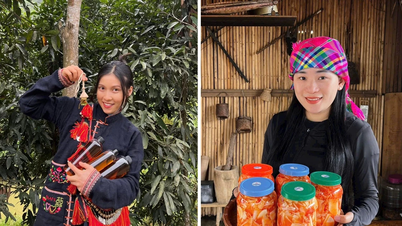























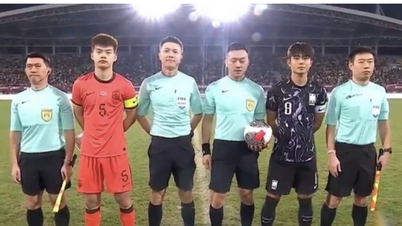




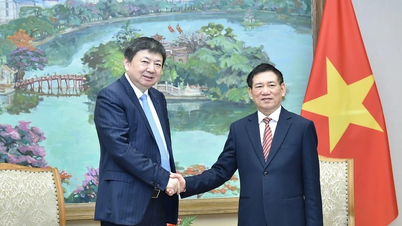


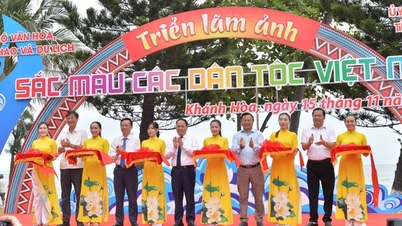


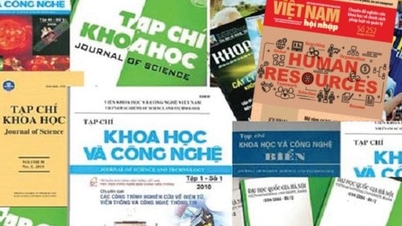

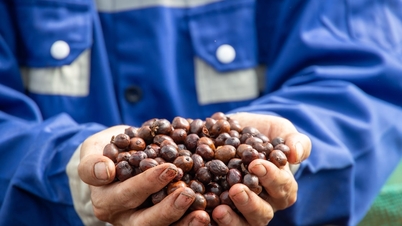




















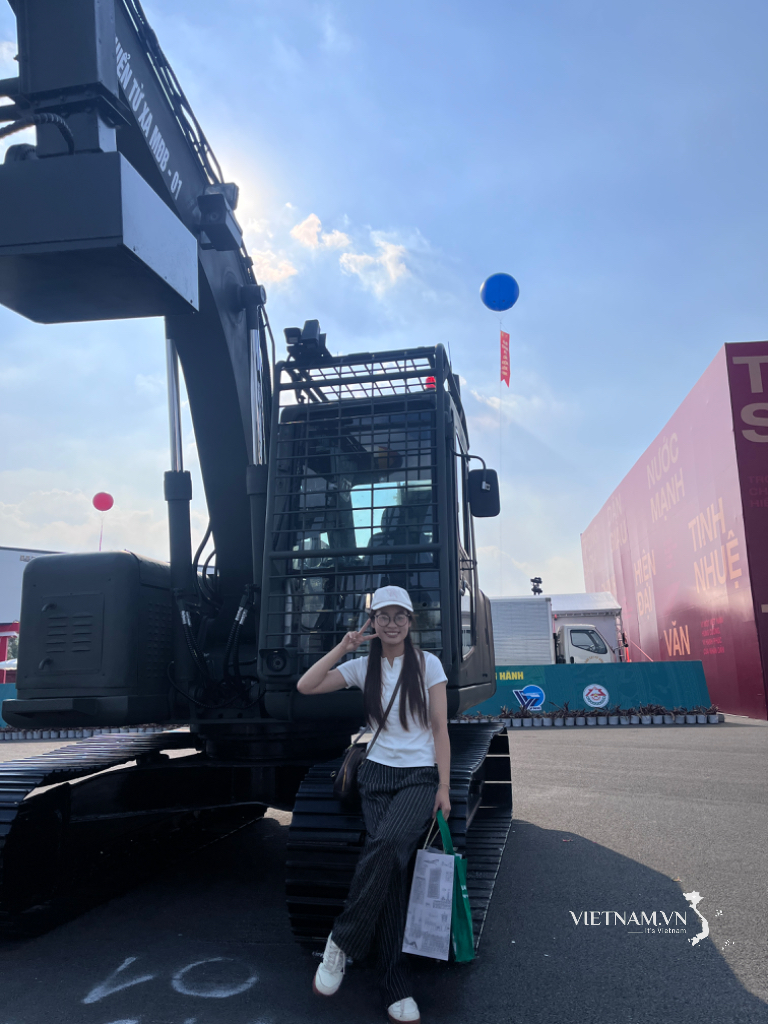
Comment (0)